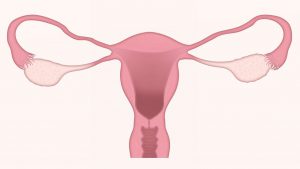I’m usually a big advocate of looking beyond women’s physical bodies and focusing on more important things. But there’s no denying that we are amazing all around, and our bodies are something worth celebrating! In addition, the way our bodies work (and how our brains are wired) is a big part of how we function in the world, so it’s worth taking a look at how women differ physically from men, and the things that our bodies and brains can do. As Ann Rogers once said, “Ginger Rogers did everything Fred Astaire did, she just did it backwards and in high heels.” And that’s just the beginning when it comes to the wonders of womanhood…Read on for more fascinating facts about women’s bodies and brains!
1. Color Me Surprised!

Here’s an experiment: go to the hardware store and grab a pile of paint chips (hey, they’re free!) and see who’s better at telling the difference between “dandelion,” “goldenrod,” and “Tuscan sun.” Hint: it’ll probably be a woman. According to research done by Israel Abramov of CUNY’s Brooklyn College, women have a larger “color vocabulary” than men do.
While conducting his research Abramov asked men and women to break down the hue of a color and assign percentages to it based on how much red, yellow, green, and blue they saw. The results showed that the women were much better at detecting subtle differences in shade than the men were, especially when it came to colors in the middle of the spectrum. For example, with hues that were mainly yellow or green, the women were able to distinguish tiny differences between colors that looked identical to the men. So just trust us when we say “dandelion” will look muuuuuch better than “goldenrod.”
2. Women May Not Have Eyes in the Backs of Their Heads, But…
Next time you shout for a friend’s attention, notice how they turn to look at you. Men are more likely to turn their whole bodies, while women are more likely to simply turn their necks. This is because women have more flexible necks, as well as a more elastic muscle structure in general. All the better to know what’s going on all around us (we saw that back there!), although it does make women more prone to neck pain than men are.
3. Scents and Sensibility
Roses are red, violets are blue…they also smell sweet, and we wish you did, too. In a rather…interesting…study, Charles Wysocki, a behavioral neuroscientist at the Monell Chemical Senses Center in Philadelphia, found that women are better at detecting smells, specifically the smells coming from under your arms. As Wysocki observed, “It is quite difficult to block a woman’s awareness of body odor. In contrast, it seems rather easy to do so in men.” 
The study tested 32 fragrances to see how well they could hide body odor. Among the male subjects, 19 of the fragrances worked to fool them. When it came to the women, only two of the scents successfully overpowered the underarm funk. The researchers think that women are better programmed to detect underarm odor because it contains biological data that is relevant to them choosing a mate. I’m thinking maybe we should just stick to online dating.
4. Tomatoes, Beer, Vaginas? What Do These Have in Common?
Vaginas are actually pretty acidic, coming in with a pH of 4.5, which is pretty close to that of tomatoes or beer. Busy microbe communities in the vagina maintain this acidity, with beneficial bacteria like lactobacillus keeping things hospitable. That’s why it’s important to eat your yogurt if you have to take antibiotics!
5. Women Can Stretch…
All right, we all already know that women’s bodies stretch to accommodate growing fetuses, but have you ever stopped to think about how amazing that is? Think about this: when not in use, a healthy uterus is a small organ, measuring about 3 inches long and 2 inches wide. That’s smaller than a credit card! But during pregnancy, that quickly changes. By about 20 weeks into pregnancy, the expanding uterus reaches all the way to the navel. The outer edge of the uterus reaches the lower edge of the rib cage by about 36 weeks. And let’s not even talk about how the cervix dilates during childbirth. Just remember this: 10 centimeters is almost 4 inches. Youch.
6. And Grow!
While women’s bodies generally stop growing earlier than do men’s, there is one thing that may continue to grow (and it’s something to get excited about) – the clitoris. This means that many women in their forties and fifties have stronger orgasms than they did during their teens and twenties. Go Mother Nature!
7. Ah, Sweet Mystery of Life…
I would argue that there isn’t all that much that is mysterious about men’s bodies. But women’s? Well, women’s bodies are so mysterious that the ancient Greeks believed that the uterus could wander around the body causing trouble – and today, doctors still can’t agree as to whether the “G-spot” exists. Some women report “G-spot orgasms” and some doctors claim to have found anatomical proof, but the evidence is thin. For now, the question of whether the G-spot is a myth, an internal extension of the clitoris or its own unique bit of tissue remains a mystery. And some mysteries are more interesting to solve than others…
8. Do You Hear What I Hear?
When it comes to hearing the slightest noise, women have it covered, even while asleep. Women are biologically programmed to be hypersensitive to sounds during sleep so that new mothers can hear and respond to crying babies. Women are most sensitive to high pitched noises in particular. This also means that women are more likely to suffer from sleep disorders, so keep that coffee brewing…
9. Who’s Got the Bigger Brain?

That might be a controversial question, but the answer shouldn’t cause any arguments. Although male brains are 9% larger than female brains, both have the same amount of brain cells. The brain cells in women merely pack together more densely.
One thing that is bigger in women’s brains than in men’s? The anterior cingulate cortex, the part of the brain that weighs options when making a decision. In addition, Dr Ragini Verma, PhD, an associate professor in the department of Radiology at the Perelman School of Medicine at the University of Pennsylvania, and colleagues found that women’s brains are more interconnected than men’s. This means that women are faster at making social connections and can adapt to routine more easily. We’ll just leave it at that.
For centuries, women’s bodies and brains were viewed as anything from utterly mysterious to shameful to weak. But nothing could be further from the truth. Women’s bodies and brains are fabulous and fascinating! They are finely tuned, and can do amazing things (like, uh, grow a whole new human) – not to mention the ways that they help us to fill all of the many roles we fill everyday. So, if you’ve got it (and we all do!), flaunt it!